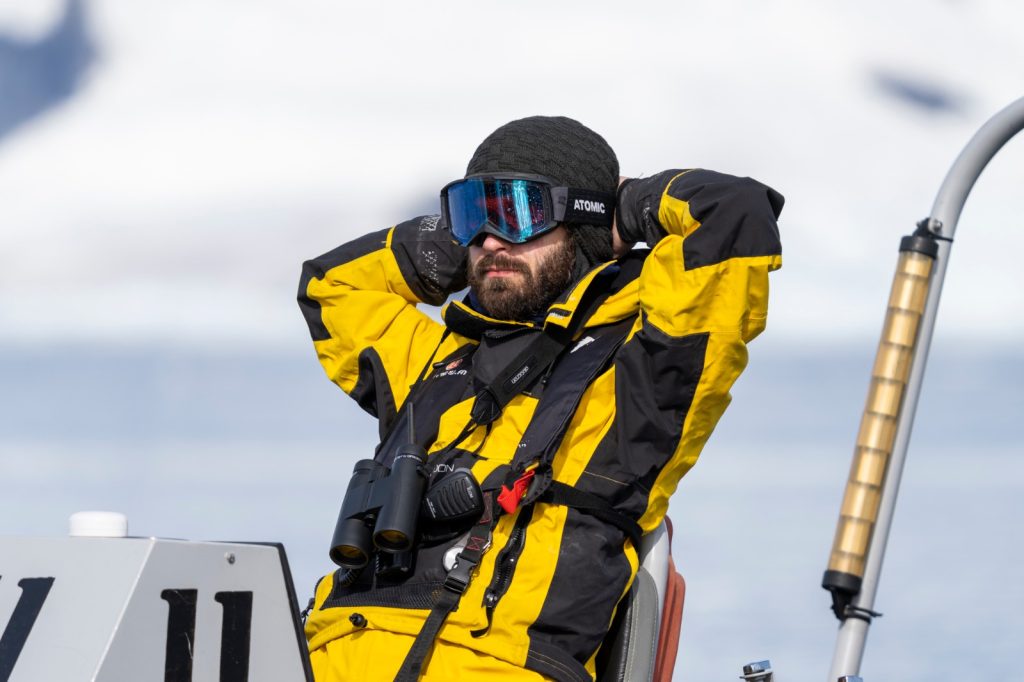If the expedition cruise ships cannot dock in port, but (perhaps for lack of a port) instead has to hold position at anchor, the expedition team will take the expedition boats ashore and prepare a landing site.

Essential for such a landing is the equipment. This applies on the one hand to one's own clothing and equipment, such as life jackets and rubber boots, but on the other hand, also to the supplies and rescue equipment, such as water, food (very dry cookies!), throw tents, and more, that are necessary in the event of a stranding to supply and bridge the time until an evacuation. Therefore, once a safe landing site is established, the team's first task is to load this equipment from the boat to the landing site. With equipment for 100 people for 10 days, a lot of weight then has to be passed down the chain from one team member to the next. So the daily workout is in the bag!

Once the equipment is ashore, the landing site is secured and prepared for guests. Safe paths are marked out and vantage points established, which means they are safe for guests and team, as well as for the flora and fauna of the region. There are organizations in both the Arctic (AECO) and Antarctic (IAATO) that promote sustainable tourism. Their information brochures contain guidelines for the protection of flora and fauna. These include, among other things, distance regulations to animals; for example, in the Antarctic, a distance of at least 5 meters from penguins must be maintained. This is to ensure that the animals are not disturbed in their natural habitat. Accordingly, certain areas of a landing site are marked as no-go areas. To ensure that all employees working in these areas are familiar with the guidelines, a multiple-choice test provided by AECO or IAATO must be completed each year. This involves answering around 100 questions, the answers to which should be based on a thorough study of the information material.

Once the landing site is prepared and the guests are on their way ashore, the team members are assigned to positions to ensure that the guests adhere to the aforementioned distance rules and have a good time ashore. One of my favorite positions is that of “Wader Boy”. Wearing (ideally) waterproof waders and a matching jacket, you stand in the water, hold the boats securely, and make sure the access point to the landing site is clear so that guests can get on and off the boats safely. This also results in pictures like this one from Antarctica, in which I can be seen (in orange) with colleagues as we push ice out of the way so that the boats can safely reach the landing site.

When I came back on board after up to eight hours in snow and ice with countless new favorite moments, and perhaps had time to warm up with a coffee or a hot shower, I definitely felt what you I had done that day!




